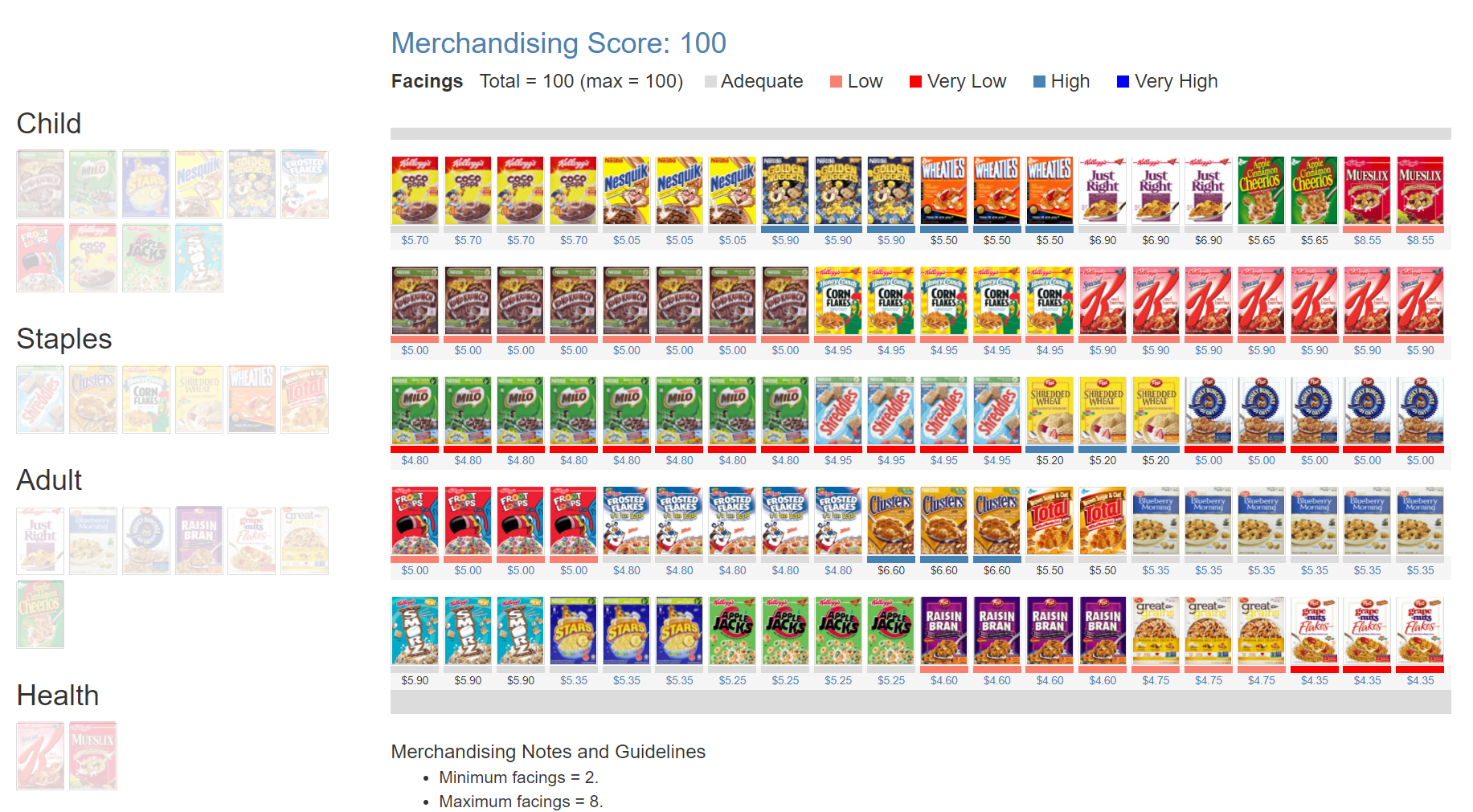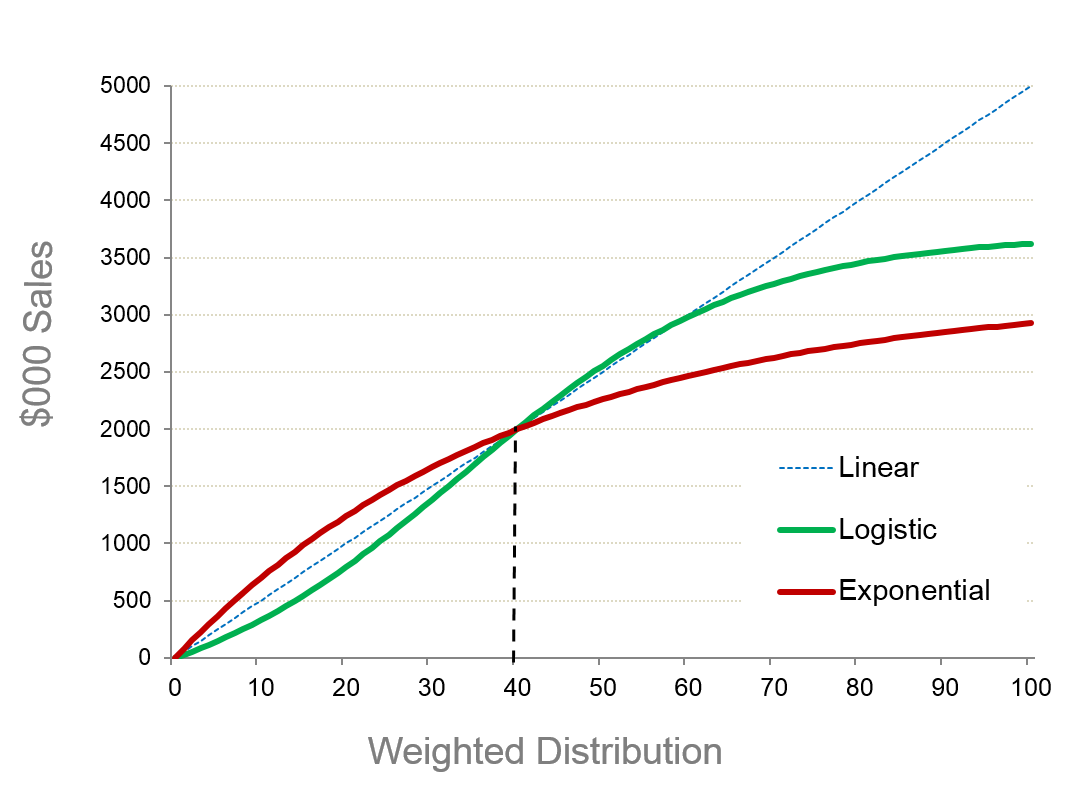-
Sales & Distribution
Sales and Distribution
Interdependence of Demand and Supply
Components of Sales — Width & Depth
Measures of Distribution (Width)
Sales and Distribution Priorities
Distribution Network — Basics
Relationship between Sales and Distribution
Right Channels, Right Chains
Right Assortment
Managing Assortment
Battle of Shelf Space
Measures of Assortment and Sales Velocity
Number of Items Stocked
Assortment Analysis
Sales per Point of Weighted Distribution
Share in Handlers
Average Sales per Store
Rate of Sales
Rate of Sales/Gross Profit
Portfolio Analysis
Fragmentation Analysis
Securing Retailer Support
Managing Stock in Trade
Allocation of Shelf Space
Cost of Stockouts
- Retail Tracking
- Sales and Distribution
- Retail Analytics
- Category Management
- Marketing Education
- Is Marketing Education Fluffy and Weak?
- How to Choose the Right Marketing Simulator
- Self-Learners: Experiential Learning to Adapt to the New Age of Marketing
- Negotiation Skills Training for Retailers, Marketers, Trade Marketers and Category Managers
- Simulators becoming essential Training Platforms
- What they SHOULD TEACH at Business Schools
- Experiential Learning through Marketing Simulators
-
MarketingMind
Sales & Distribution
Sales and Distribution
Interdependence of Demand and Supply
Components of Sales — Width & Depth
Measures of Distribution (Width)
Sales and Distribution Priorities
Distribution Network — Basics
Relationship between Sales and Distribution
Right Channels, Right Chains
Right Assortment
Managing Assortment
Battle of Shelf Space
Measures of Assortment and Sales Velocity
Number of Items Stocked
Assortment Analysis
Sales per Point of Weighted Distribution
Share in Handlers
Average Sales per Store
Rate of Sales
Rate of Sales/Gross Profit
Portfolio Analysis
Fragmentation Analysis
Securing Retailer Support
Managing Stock in Trade
Allocation of Shelf Space
Cost of Stockouts
- Retail Tracking
- Sales and Distribution
- Retail Analytics
- Category Management
- Marketing Education
- Is Marketing Education Fluffy and Weak?
- How to Choose the Right Marketing Simulator
- Self-Learners: Experiential Learning to Adapt to the New Age of Marketing
- Negotiation Skills Training for Retailers, Marketers, Trade Marketers and Category Managers
- Simulators becoming essential Training Platforms
- What they SHOULD TEACH at Business Schools
- Experiential Learning through Marketing Simulators
Relationship between Sales and Distribution
Establishing and maintaining a channel network for products with extensive distribution is a resource-intensive and time-consuming endeavour. While there are advantages to expanding the distribution network, it is essential to consider both the benefits and costs involved. As manufacturers broaden their distribution reach, they eventually reach an optimal level where the incremental gains from adding more outlets may not outweigh the expenses associated with servicing them. Furthermore, retailers need to evaluate their return on inventory for the products they carry. If the return on inventory is insufficient to justify listing of an item in some stores, retailers may choose not to stock it in those locations.
To know whether it is cost-effective, manufacturers need an understanding of how much sales and profits they stand to gain from further expansion in distribution, and how much this will cost them.
Exhibit 31.2 provides a visual representation of the relationships between the sales and distribution. Let us consider the scenario in the exhibit where a brand has sales amounting to $2,000,000 and a weighted distribution of 40%. Now, the sales manager aims to develop plans to enhance the brand’s distribution and is interested in understanding the potential sales growth that could be achieved by increasing the distribution.
If the relationship between sales and distribution is linear, doubling distribution from 40% to 80% will result in doubling of sales to $4,000,000. Sales will increase to $3,000,000 if distribution is expanded to 60% and $2,500,000 if it grows to 50%.
The linear model, however, is theoretically unsound because it suggests no cannibalization of sales between stores, no store switching behaviour, and a homogenous trade channel.
It is more realistic to assume either a logistic or an exponentially declining relationship between sales and distribution. Most products that are launched with substantial marketing efforts and investments would tend to exhibit an exponentially declining relationship, where incremental sales from expansion in distribution, decline with increase in distribution. As the velocity of sales decreases with expansion of distribution into smaller stores, it becomes increasingly less viable for these smaller retailers to stock the brand, and for the manufacturer to distribute it.
Like the exponentially declining functional form, the logistic relationship captures the notion of saturation. This is the point at which cannibalization offsets the impact of any further gains in distribution on sales. The logistic relationship also assumes that at low levels, the impact that distribution has on sales will be constrained due to factors such as lack of awareness. This may hold true for products that have limited advertising and rely on their in-store presence and in-store initiatives to gain share of mind.
Previous Next
Use the Search Bar to find content on MarketingMind.
Online Apps to train Retailers

The Plannogrammer is an experiential learning facility for category managers, trade marketers, and retailers in consumer markets. Ideally suited for hybrid learning programmes, Plannogrammer imparts hands-on training in the planning and evaluation of promotions and merchandising.
It supports a collection of simulation and analysis platforms such as Promotions and Space Planner for optimizing space and promotions, Plannogram for populating shelves and merchandising, a Due To Analysis dashboard that decomposes brand sales into the factors driving sales, and a Promotion Evaluator to evaluate the volume, value and profit impact of promotion plans.
Contact | Privacy Statement | Disclaimer: Opinions and views expressed on www.ashokcharan.com are the author’s personal views, and do not represent the official views of the National University of Singapore (NUS) or the NUS Business School | © Copyright 2013-2025 www.ashokcharan.com. All Rights Reserved.






